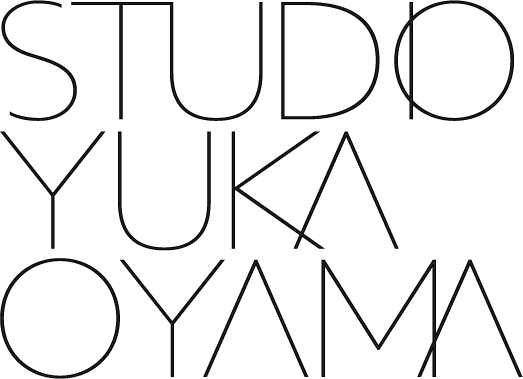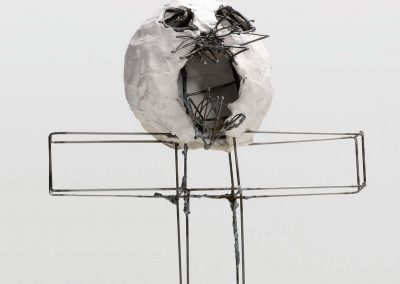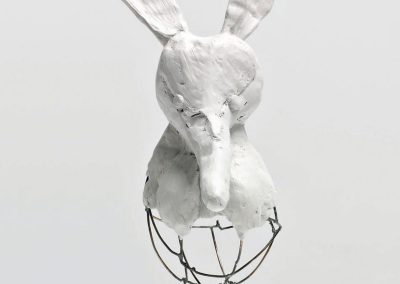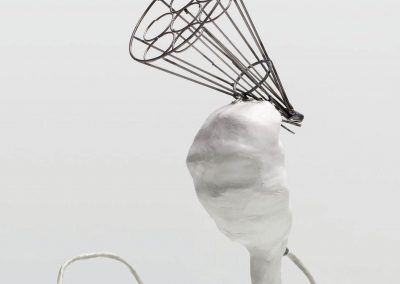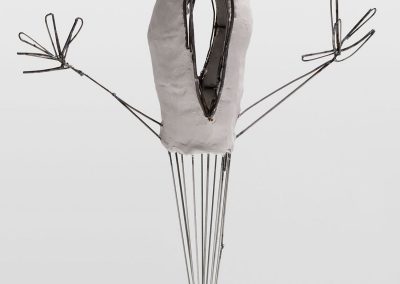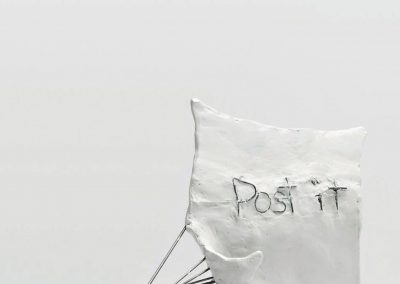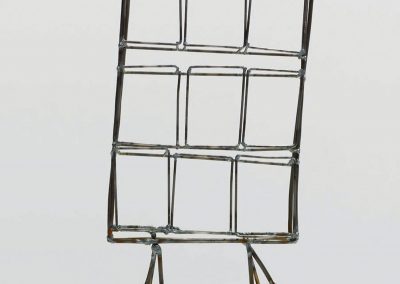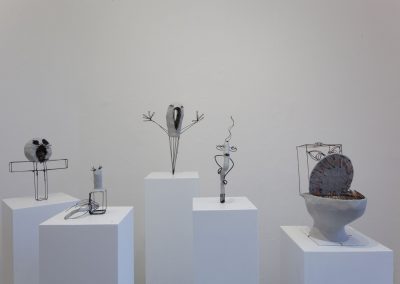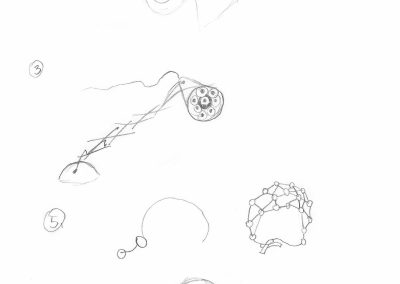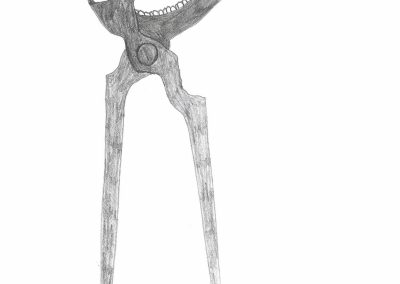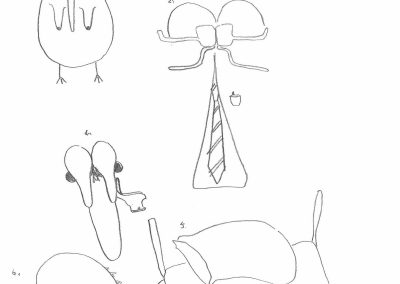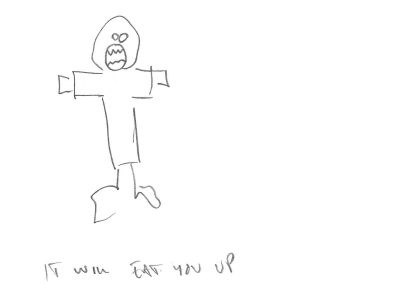HEROES, HELPERS, ENEMIES… AT WORK
In this art action, Oyama was curious to find out which domestic objects she, or other people, might select that would become anthropomorphised and convey unconscious insights rooted in our culture today.
“‘Talk about objects’ often became a camouflage used to speak about something very serious and personal. I am more interested in people, their imagination that is kept within oneself, than people’s relationships with objects.” – Yuka Oyama
Patrick Lafcadio Hearn, a Greek/Irish journalist (b.1850 in Greece, d. 1904 in Japan) collected and translated traditional Japanese folktales and Buddhist tales that were considered old-fashioned and unattractive for many Japanese scholars at the end of the 19th century. (Published in Glimpses of Unfamiliar Japan, Japanese Ghost Stories, Kwaidan). In these tales, domestic objects were anthropomorphised and conveyed morality tales rooted in the culture of the past
Hearn was especially interested in themes like the duality of dead spirits and real life. Through translating the folklore and religious tales, placing them in a modern context and language, Hearn succeeded in transforming the stories more accessible—like lived experiences. His creative input provided profound details and images that allowed English readers to better grasp a sense of Japanese culture. Eventually, Hearn rescued a number of Japanese folktales that might have otherwise vanished. His intervention was so important, that in fact Japanese people retold and rewrote Hearn’s stories, translating them back from English into Japanese.[1]
Oyama was fascinated by the choice of objects in Hearn’s tales. For example, soldiers made of toothpicks appear and dance at night. As a result, a woman suffers from a lack of sleep. It turns out that these toothpicks are trying to tell her to stop stubbing used toothpicks into a tatami mattress. In another story, voices of two children come out from a used futon duvet. The duvet had once been used by two orphans as a shelter, protecting them from the cold after they had lost their home. They were found dead in the morning, and the duvet was sold on afterwards. The story condemns the greed of the people selling the duvet for profit.
In Heroes, Helpers, Enemies… at Work, Oyama sought to find out what kind of domestic objects we would select today and what kind of advice for living in our time that they could give us. To do this, she interviewed people of various backgrounds and vocations, asking them to select objects found at places where they work, that for them, displayed various human characteristics. She also asked them to make humanized versions of these objects in drawings. From these drawings, she constructed sculptures. She worked on this artwork during an artist residency at IASPIS, where she had her studio at the Ädellab at Kostfack in Stockholm in 2009. The school shared a cafeteria with Nokia, which allowed Oyama to meet engineers, software developers, taxi drivers, art students, faculty members and administrational staff and discuss the objects that they need at work.
____
[1]Lafcadio Hearn, Glimpses of Unfamiliar Japan, translated by Masayuki Ikeda (Tokyo: Kadokawa Bunko Sofia, 2006), pp. 346-347.
Heroes, Helpers, Enemies, Magical Medicines at Work, 2009
DIMENSIONS:
COMPANY (rabbit), 2009
Modeling clay, steel, textile, 20 x 13 x 19 cm
GUIDANCE (post-it), 2009
Modeling clay, steel textile, 15 x 15 x 9 cm.
MAGICAL MEDICINE (chocolate), 2009
Modeling clay, steel, textile,25 x 12 x 8 cm
COMPETITOR (lamp), 2009
Modeling clay, steel, textile, 40 x 10 x 6 cm
MONSTER (cross), 2009
Modeling clay, steel, textile, 35 x 27 x 15 cm
TEMPTATION (cigarette), 2009
Modeling clay, steel, textile, 40 x 10 x 6 cm
HELPER (needle), 2009
Modeling clay, steel, textile,45 x 38 x 13 cm
Interviewees’ drawings, 2009
Pencil on paper, 21 x 29,7 cm
EXHIBITION:
Splendid Isolation, Kunstraum Kreuzberg, Berlin, 2009
CREDITS:
PHOTOGRAPH (objects) Marlen Bäumer
PHOTOGRAPH (installation) Carsten Eisfeld
